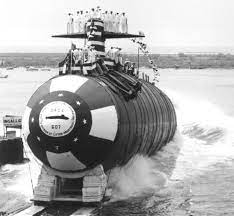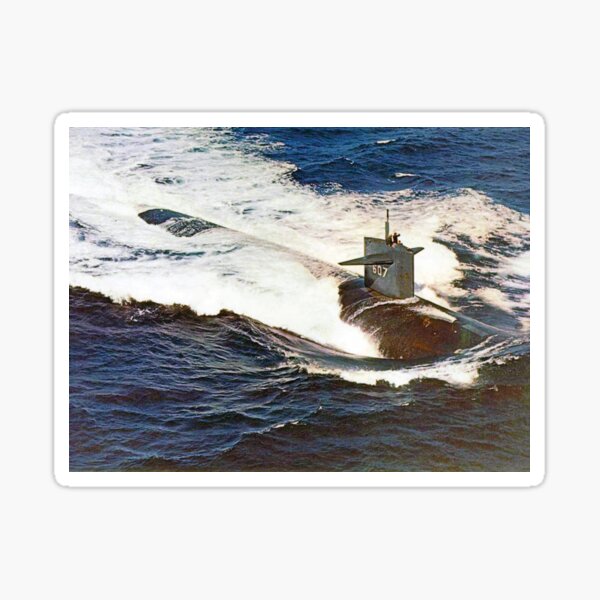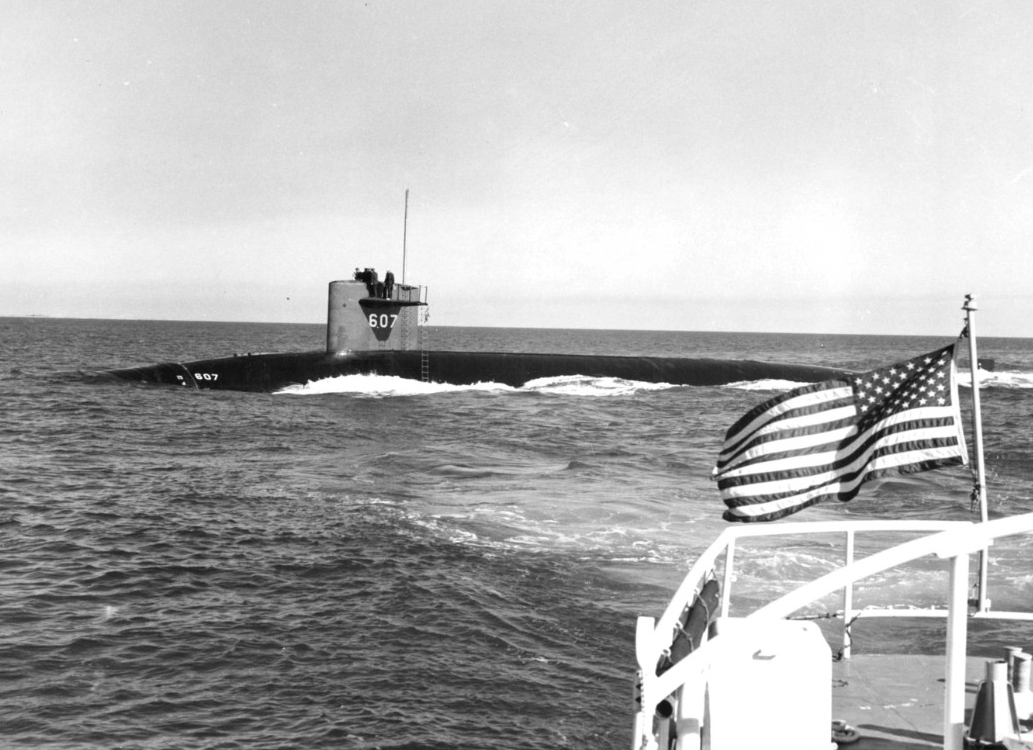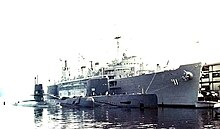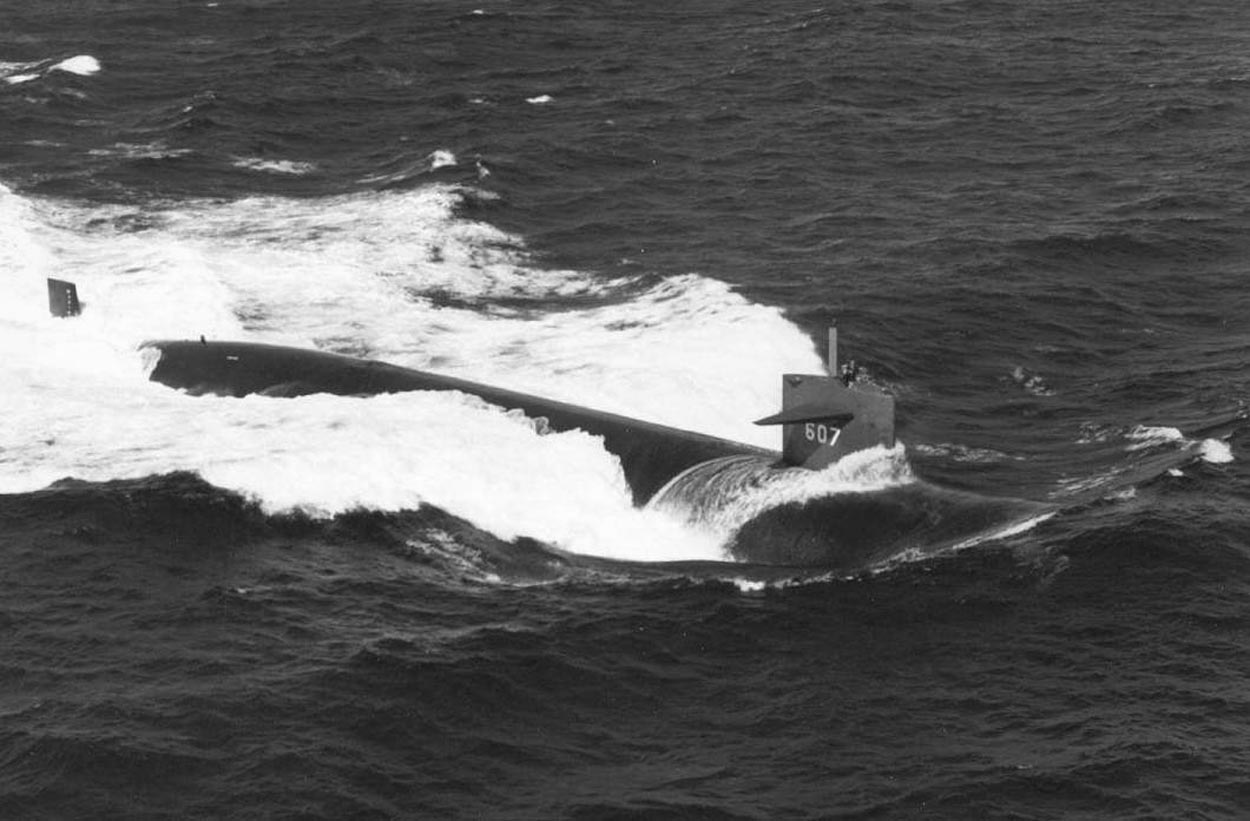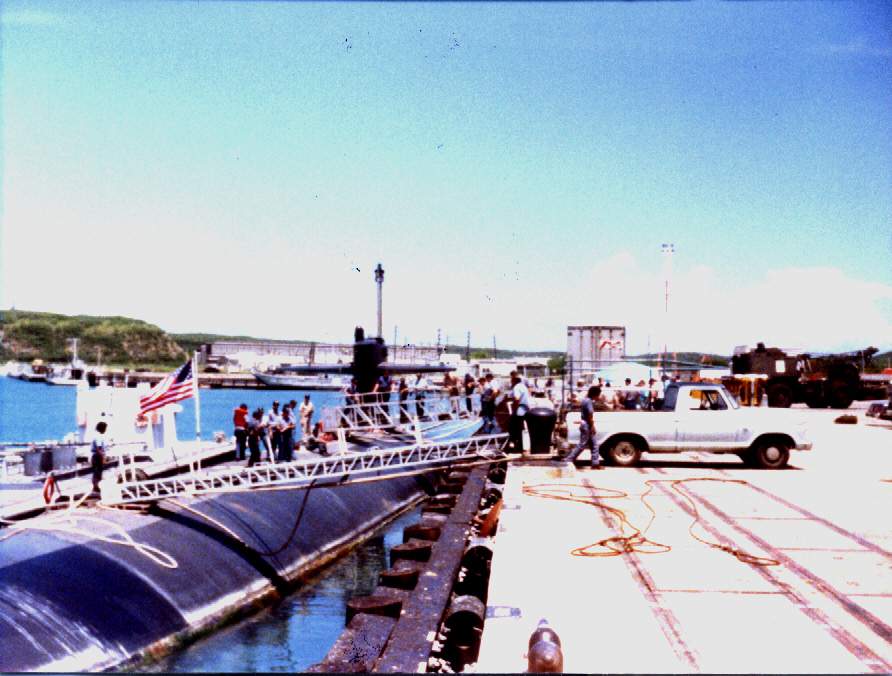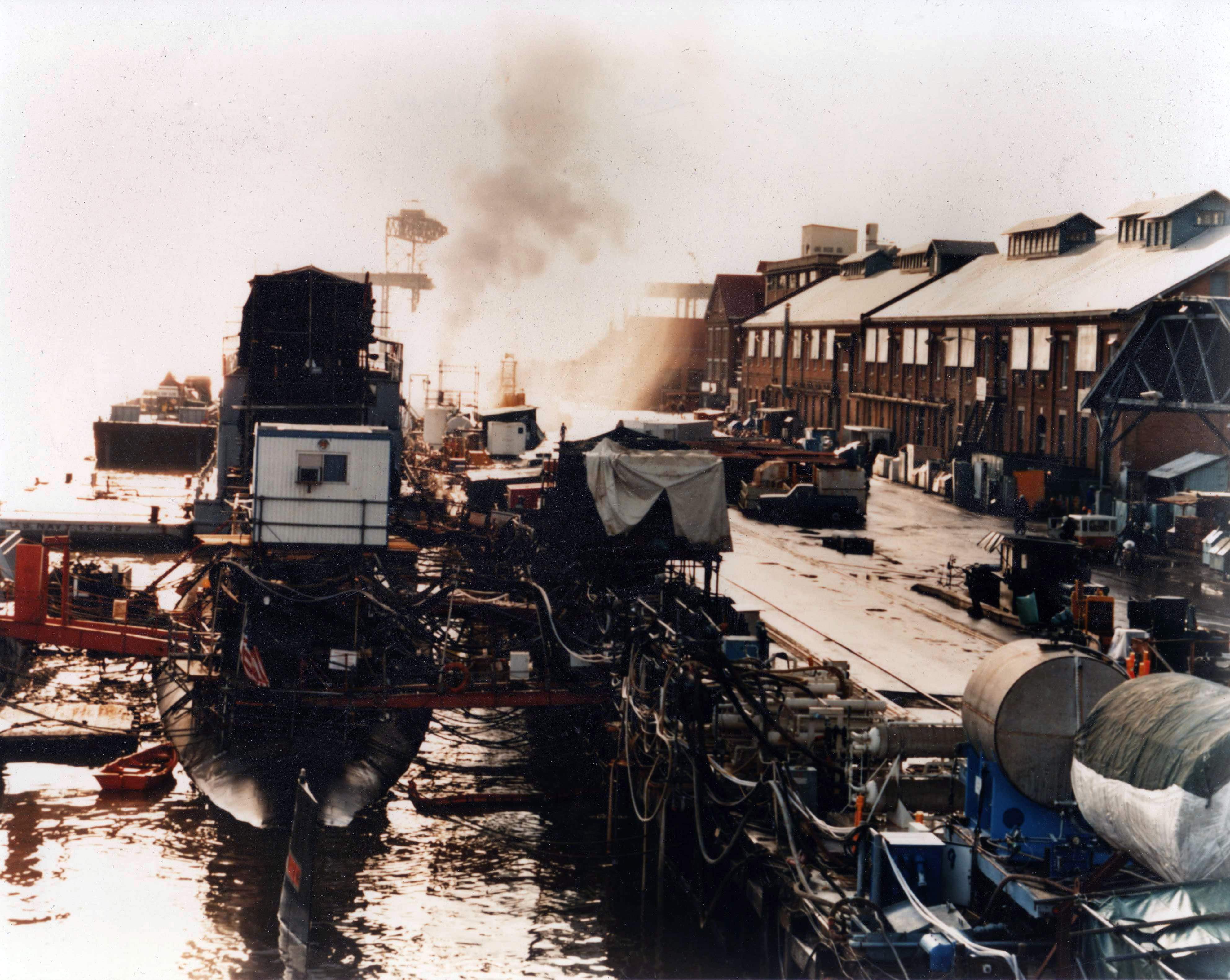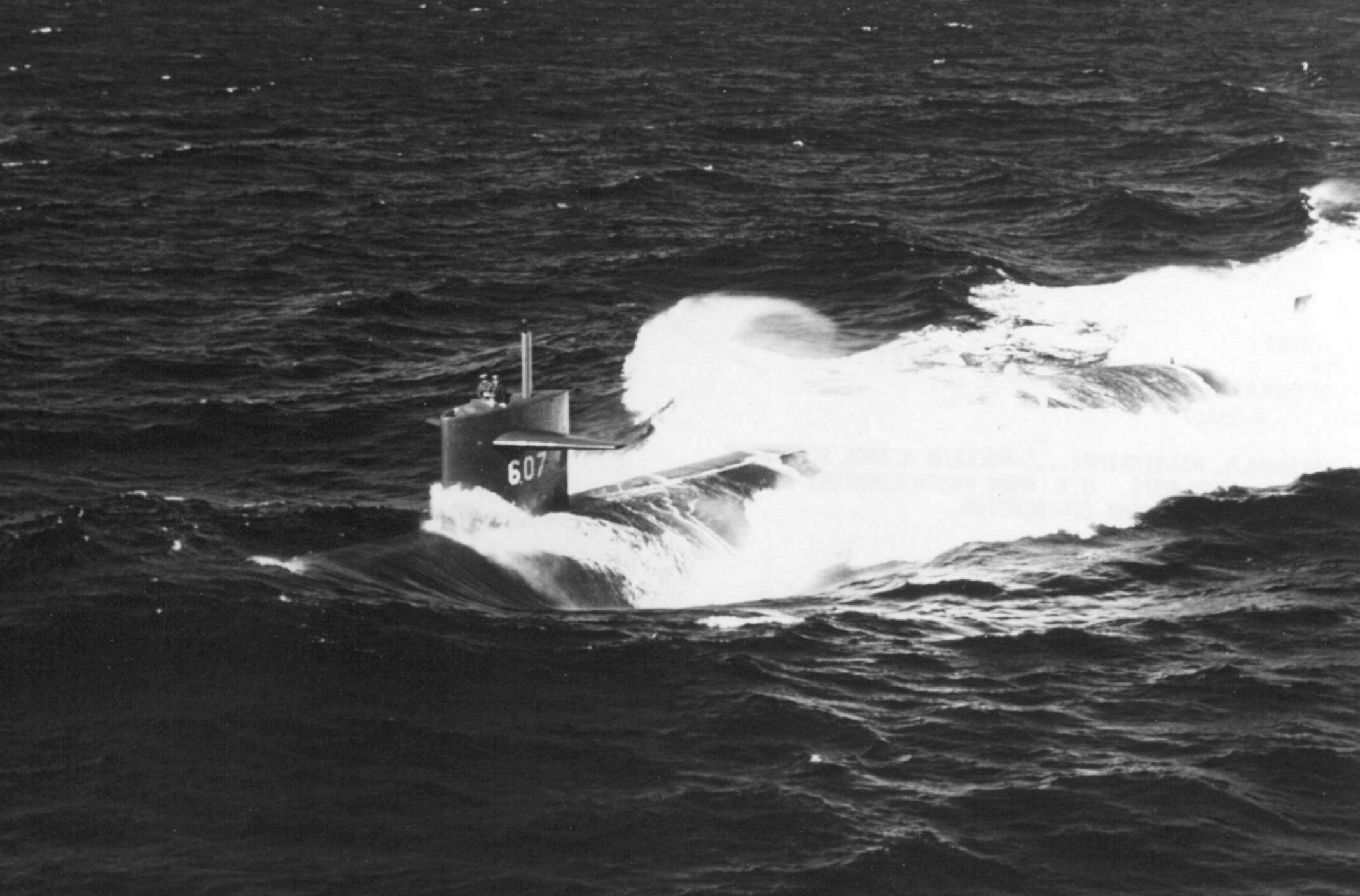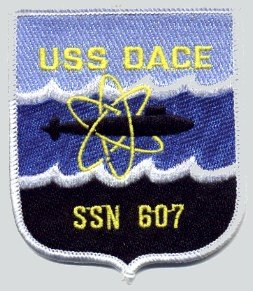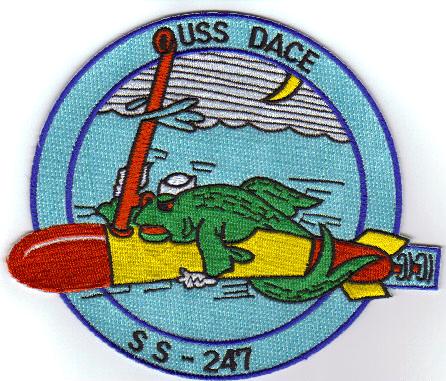Naval history is full of significant and interesting events. This brief history of what has transpired in the past and relate them to how these events have shaped the U.S. Navy today.
USS Dace (SSN 607), a Permit-class submarine was launched on 18 August 1962 by the Ingalls Shipbuilding in Pascagoula, Mississippi and commissioned on 4 April 1964, with Commander John A. Walsh in command. She was the second ship of the United States Navy to be named for the dace, any of several small North American fresh-water fishes of the carp family.
After commissioning, Dace was assigned to Submarine Development Group (SubDevGru) Two, based in New London, Conn. Boats in the Development Group conducted special operations to innovate and evaluate submarine warfare tactics, weapons system components, and sonar systems.
As of 1 October 1967, Dace joined Submarine Squadron (SubRon) Ten, Submarine Division 102. In the course of the boat’s underway activities in November 1967, she called at Bermuda. For outstanding performance during operations in late 1967, Dace’s crew earned the Navy Unit Commendation (NUC), and Cmdr. Kinnaird R. McKee, her commanding officer, received a Legion of Merit.
From 22 January–1 February 1968, Dace participated in SubASWEx 1-68, an antisubmarine warfare (ASW) exercise conducted in the Gulf of Maine for SubDevGru Two to assess the effectiveness of Permit and Sturgeon class boats, in company with Seawolf (SSN-575), Clamagore (SS-343), Tench (SS-417), and Sturgeon (SSN-637). Sailing from New London on 4 March, Dace carried out a special operation for Commander, Submarine Force, U.S. Atlantic Fleet (ComSubLant). After two months at sea, on 4 May she briefly touched at the U.S. Navy Underwater Sound Laboratory in New London, where workers installed a calibration and reference hydrophone. The submarine then completed sonar calibration and acoustic level measurement in the Atlantic Ocean with Tusk (SS-426), returning to New London’s State Pier on 9 May.
Dace put to sea again 6–8 June 1968 for a special demonstration of a Permit-class submarine’s proficiencies in action against a high speed boat, represented in this exercise by Shark (SSN-591). Dr. John S. Foster, Assistant Secretary of Defense, as well as other representatives from the Secretary’s office and the commander of SubDevGru Two embarked in Dace to observe operations.
The submarine’s endeavors and accomplishments in this period continued to be recognized with official accolades, as Dace won her third consecutive Fire Control Excellence Award and fourth consecutive Battle Efficiency “E” Award for 1968. The boat additionally received a second Navy Unit Commendation and Cmdr. McKee earned a Gold Star in lieu of a second Legion of Merit award for Dace’s spring 1968 operations.
Between October 1968 and June 1969, Dace underwent overhaul at Electric Boat Division of General Dynamics Corporation at Groton, Conn. Work completed on the boat included updating and refurbishing the sonar, fire control, and communications equipment. The overhaul also served as a test of a shorter nine month refurbishment period vice a normal 18 month availability.
In the latter half of 1969, Dace conducted sonar calibrations, sound trials, and weapons systems alignments at the Atlantic Undersea Test and Evaluation Center (AUTEC) range in Tongue of the Ocean in the Bahamas and the Grand Turks range in St. Croix, U.S. Virgin Islands. From January–May 1970, Dace deployed to the Mediterranean, taking part in special operations for the Sixth Fleet. For the rest of the year, she developed and evaluated undersea warfare tactics.
From 25 January –7 February 1971, Dace completed LantFlEx 71/RimEx 2-71 in the Western Atlantic. She then took part in two operational tests of the SubRoc weapons system off Roosevelt Roads, Puerto Rico (13–17 February and 5–10 March). On 10 March, Dace commenced a 12-day transit to the Mediterranean, where she took part in special operations for the Sixth Fleet through 25 April. Operating with Task Group (TG) 60.1, the ship took part in ASW operations in the eastern Mediterranean (2–13 May). The submarine participated in exercise National Week IX (26–30 May) and then resumed special operations for the Sixth Fleet (9–19 June). Dace began her transatlantic journey home on 30 June, arriving back at New London on 7 July.
Following post-deployment standdown, Dace resumed a busy operational schedule. From 12–14 August 1971, the submarine was underway in the Narragansett Bay area conducting a technical evaluation of the Type 18 periscope system with the Naval Underwater Sound Lab at New London. For much of the rest of the month (16–27 August), she matched her skills against Tullibee (SSN-597) during submarine vs. submarine type training in Narragansett Bay. In September, Dace took part in SubASWEx 1-72 in the western Atlantic (7th–27th) and then working with Cecil (DD-835) in the Narragansett Bay area (27 September–1 October) continued with the operational evaluation of the Type 18 periscope system. From 21–27 October, the ship assisted TG 27.4 with an aircraft carrier evaluation exercise in the western Atlantic. While serving as training ship for prospective submarine commanding officers, she completed more type training exercises with Billfish (SSN-676) in the Narragansett Bay operational area (1–7 November), followed immediately by taking part in an operational evaluation of AN/SQS-35 and AN/SQS26CX sonars for ComCruDesLant (8–13 November). She rounded out the month with SubEx Kilo 1-72 in the western Atlantic (15–24 November). For her overall operational excellence in 1971, Dace yet again earned the Battle Efficiency “E” Award.
Through much of 1972 as the attack boat prepared for and undertook another Mediterranean deployment, Dace continued to evaluate the Type 18 periscope system during underway operations. She completed SubASWEx 2-72 in the western Atlantic (19 January–7 February). In April, she trained with Greenling (SSN-614) (3–7 April) and Tinosa (SSN-606) (17–21 April) in the Narragansett Bay operational area. Dace departed New London on 3 May en route to the Mediterranean. For most of the deployment, the submarine conducted special operations for the Sixth Fleet, as well as antisubmarine operations (11–15 June). For her work during special operations from 12 May–7 August, Dace received her third Navy Unit Commendation, and Cmdr. Thomas E. Nolan, her commanding officer, received the Legion of Merit.
Dace returned to New London on 2 September 1972 and concluded her operational evaluation of the Type 18 periscope system on the 10th. For her outstanding achievements in the year 1972, Dace was once again the recipient of the Battle Efficiency “E” Award, her seventh such award in her first eight years in commission.
On 16 October 1972, Dace entered the Electric Boat Division of General Dynamics Corp. shipyard at Groton to begin an extensive overhaul, which continued through all of 1973 and 1974. During her sea trials on the night of 24 March 1975 while operating with submarine rescue ship Tringa (ASR-16), Dace collided with fishing vessel Mars approximately 75 miles south of Martha’s Vineyard, Mass. Neither vessel sustained any significant damage. At the conclusion of her refit period on 10 April, the submarine engaged in post-overhaul shakedown testing before resuming regular operations.
Dace departed New London on 28 April 1975 to complete weapons systems accuracy tests and acoustic trials. During this underway period, the submarine made port calls at Roosevelt Roads, P.R., and Port Everglades and Cape Kennedy, Fla., in May before going back to New London in June for routine upkeep. Sailing south again in July, Dace completed Mk 48 torpedo firing exercises and SubRoc operational tests and touched at Norfolk. In August, she returned to New London for additional work and training.
After taking part in an operation for ComSubLant during the first week of November, Dace deployed to the Mediterranean (28 November 1975–25 May 1976). The submarine took part in three operations (8–29 December) and then moored next to submarine tender Howard W. Gilmore (AS-16) at La Maddalena, Sardinia, Italy, for four weeks of maintenance (29 December –28 January 1976). During the remainder of her deployment with Sixth Fleet, the submarine returned to La Maddalena for upkeep with Howard W. Gilmore from 18 March–14 April; visited Naples, Italy, in February and May; and called at La Spezia, Italy, in May.
After post-deployment stand down, Dace returned to operations, making a port call at Port Everglades in July 1976. On 31 August, the submarine stood out for another trip overseas for the North Atlantic Treaty Organization (NATO) exercise Teamwork 76. Between exercise phases, the ship called at Haakonsvern, Norway, in September, and in October at Faslane, Scotland. She arrived back at New London on 24 October. In November, Dace had an interim dry docking, followed by a Board of Inspection and Survey (InSurv) inspection. The submarine operated locally for the rest of the year.
During the early months of 1977, Dace took part in CNO Project K243, involving the Long Range Torpedo Homing System. On 15 March, the submarine got underway to deploy to the Mediterranean once again. Over the course of the deployment, the ship participated in several operations for Sixth Fleet. She stopped at Rota, Spain, in March and held tender availabilities with Howard W. Gilmore at La Maddalena, Sardinia, from 7 May–6 June and 5–25 July. The submarine also called at Naples, Italy, in August before making the return trip to New London, where she arrived on the 18th. Dace earned the Meritorious Unit Commendation for her work in the Mediterranean “in support of Commander Sixth Fleet’s anti-submarine warfare objectives… that enhanced combat readiness and greatly expanded knowledge of tactical capabilities and limitations of submarine platforms and their sensor systems” during June and July on this deployment.
Late in 1977 after a period of stand down and upkeep, Dace resumed underway operations. In October, the ship took part in CNO Projects 130 and 221, involving mines, also making a stop at Port Everglades during that mission. In November, the submarine took part in Operation Small Intake. Dace’s December schedule included CNO Project 149, Mk-46 development, as well as MARCOT 3-77, a joint exercise with the Canadian navy.
Periodically between January and April 1978, Dace once again participated in CNO Project K243. In February, she took part in ASWEx 1-78 with Trepang (SSN-674). The submarine next (28 February–17 March) participated in NATO Operation Safepass 1-78, also with Trepang, followed by Operation Solid Barrier (1–24 April).
On 6 July 1978, Dace set off on a relatively short Mediterranean deployment. Later that month, the submarine took part in National Week exercises. While on deployment, Dace conducted several operations for the Sixth Fleet, had a tender availability with Howard W. Gilmore (14 August–2 September), and touched at Rota, La Spezia (8–12 August), and Naples (18–21 September). On the evening of 24 September while operating in the Strait of Gibraltar, Dace struck an unknown surface vessel after submerging to periscope depth. The submarine sustained minor superficial damage and no crewmen suffered injuries. Dace returned to New London on 10 October.
As Dace prepared for an upcoming homeport change and major overhaul later in the year, she continued to execute a busy operational agenda in the first half of 1979. From 17 January–8 February, the submarine participated in ReadEx 1-79. During this exercise, she also took part in CNO Project 160-1 (27–29 January) and completed a Mk-48 exercise (2–4 February). From 6–12 March, the boat called at Port Canaveral, Fla. Later Dace welcomed a group of midshipmen as part of their summer training (11–15 June), and shortly thereafter (18 June–7 July), the submarine was underway for CNO Project Fox II.
Effective on 17 July 1979, Vallejo, Calif., became Dace’s homeport of record in advance of her scheduled major overhaul to take place at Mare Island Naval Shipyard. En route to the West Coast, the ship called at Port Canaveral (20–23 August); St. John’s, Antigua (26–30 August); and Roosevelt Roads (31 August–21 September). She reached the Pacific via the Panama Canal on 25 September, and on the 28th of that month, Dace temporarily joined Submarine Squadron Three. Dace reached Mare Island on 8 October and her overhaul commenced two weeks later.
Modifications made to the submarine during the extensive overhaul included a major combat system conversion to the Mk. 117 Fire Control System and AN/BQQ-5 sonar system. In addition, Dace would receive certification under the SubSafe program, instituted in 1963 after Thresher’s loss “to provide maximum reasonable assurance of watertight integrity and recovery capability.” After emerging from dry dock in mid-1980, the submarine began a rigorous overhaul test program that continued until she completed her overhaul on 21 August 1981. Although her homeport was officially shifted back to New London as of 1 August, Dace remained at Vallejo through the end of the year.
Dace returned to the administrative control of SubRon 10 on 25 January 1982 and arrived back at New London on 16 February. She then commenced an extensive period of evaluations and pre-deployment workups. Over the course of the year, the submarine completed weapons system accuracy tests, acoustic trials, Mk 48 torpedo proficiency firings, sonar system certification, UGM-84 Harpoon antiship missile system certification, tactical readiness evaluation, and pre-overseas movement certification. On 27 December, Dace deployed to the Mediterranean, returning home on 20 May 1983.
After post-deployment leave and upkeep, in the summer of 1983 Dace conducted three midshipmen training cruises, a VIP cruise, and a dependents cruise and completed her InSurv inspection as well. She also received a new fire control program. During a selected restricted availability (SRA) period that ended on 14 November, upkeep completed on the submarine included replacement of the sonar spherical array, refurbishment of the torpedo tubes, and replacement of her 43 kilowatt motor generator. Dace returned to dry dock in December, however, for emergency repairs to her damaged fuel oil tanks and main ballast tanks. The submarine earned the Battle Efficiency “E” for her performance during 1983.
Emerging from dry dock in late February 1984 after $1.5 million in repairs, Dace began preparations for her next deployment. From 4–17 April, the submarine took part in COMPTUEX 84. Putting to sea on 23 July, Dace headed once again for the Mediterranean. While on deployment, the ship completed ASW operations with the Sixth Fleet and took part in the NATO exercises SHAREM 84 and Display Determination. She also made port calls at Naples, Italy, and Athens, Greece, and completed two upkeep periods in La Maddalena. The submarine arrived back at New London on 19 December. For the second year in a row, Dace was awarded the Battle Efficiency “E” for SubRon 10.
Following post-deployment stand down and upkeep, Dace sailed from New London on 4 February 1985, operating locally as well as in the Atlantic and Guantanamo Bay, Cuba, operating areas over the next month. Upon her return home, the boat held a maintenance availability at the Naval Submarine Support Facility in Groton. Departing once again on 14 April, the ship operated locally and in the Guantanamo Bay area for 17 days. She then completed four weeks of upkeep and more local operations.
Dace got underway again in July 1985, when she set course for the Bahamas to complete acoustic trials in Tongue of the Ocean and a Mk-48 and Harpoon exercise at the AUTEC range. During the Mk-48 exercise firings, torpedo tube number three short cycled on launch, causing a hot run inside the tube. The submarine spent four days at Ft. Lauderdale before returning home for two weeks of upkeep. Dace sailed for the north Atlantic in August to take part in NATO’s Ocean Safari 85, returning to New London on 23 September. The submarine remained in port at Submarine Base New London when Hurricane Gloria struck the Connecticut coastline on 27 September, due to material problems.
From 30 September–1 December 1985, Dace completed an SRA at New London. She completed sea trials in early December and following an upkeep period at New London commenced preparations for her next deployment. The boat completed pre-overseas movement certification on 22 February 1986.
Departing New London on 3 March 1986, Dace set off for the Mediterranean. While operating with the Sixth Fleet, Dace participated in operations off the coast of Libya, working with Dallas (SSN-700) to keep Libyan Soviet-built Foxtrot-class diesel-electric submarines at bay as U.S. air and surface forces engaged Libyan air, surface, and land targets during Operations Attain Document III in March and El Dorado Canyon in April. For her contributions to the effort to keep the Libyan threat contained during the spring of 1986, the submarine received the Navy Unit Commendation and crewmembers were also authorized to wear the Armed Forces Expeditionary Medal. Dace returned to State Pier in New London on 24 July. After post-deployment leave and upkeep, the ship took part in FleetEx 4-86 (15 October–11 November) and otherwise operated locally through January.
In preparation for her next deployment, Dace got underway on 29 January 1987 for Fleetex 1-87, which took place through 10 March, followed by Fleetex 2-87 (11 May–12 June). On 13 July, Dace sailed south to take part in UNITAS 28-87, an annual training cruise to exercise with units from multiple South American navies. In addition to Dace, U.S. participants in 1987 were Arthur W. Radford (DD-968), Barnstable County (LST-1197), John King (DDG-3), DeWert (FFG-45), and Sculpin (SSN-590). In late September, the submarine completed an ASW exercise with Arthur W. Radford and then detached from the UNITAS force to return to New London, where she arrived on 7 October. The boat then prepared to transfer to the West Coast for deactivation. Dace once again earned the Battle Efficiency “E” for her work in 1987.
Making her last trip down the Thames River, Dace stood out from Naval Submarine Base New London on 13 January 1988 and set a course for Puget Sound Naval Shipyard in Bremerton, Wash., her official new homeport as of 15 December. The submarine’s final voyage took her through the Panama Canal, detoured south across the equator to initiate the ship’s pollywogs into trusty shellbacks of King Neptune’s Realm, and paused at San Diego, Calif., for four days before arriving at Naval Submarine Base Bangor on 24 February. Three days later, a ceremony marked the submarine’s inactivation. Attendees included Adm. Kinnaird R. McKee, Director, Naval Nuclear Propulsion Program and Dace’s commanding officer from 1966–1969, as well as retired Rear Adm. John A. Walsh, Dace’s first commanding officer.
On 4 March 1988, Dace was towed to Puget Sound Naval Shipyard, Bremerton, Wash., where she served as the test platform for a Naval Sea Systems Command (NavSea) 08 directed special hull test. When testing concluded, the crew removed the submarine’s reusable equipment and offloaded all spare parts to complete the inactivation process.
USS Dace served her country for 24 years, 7 months and 28 days of active duty, until decommissioned on 2 December 1988.
